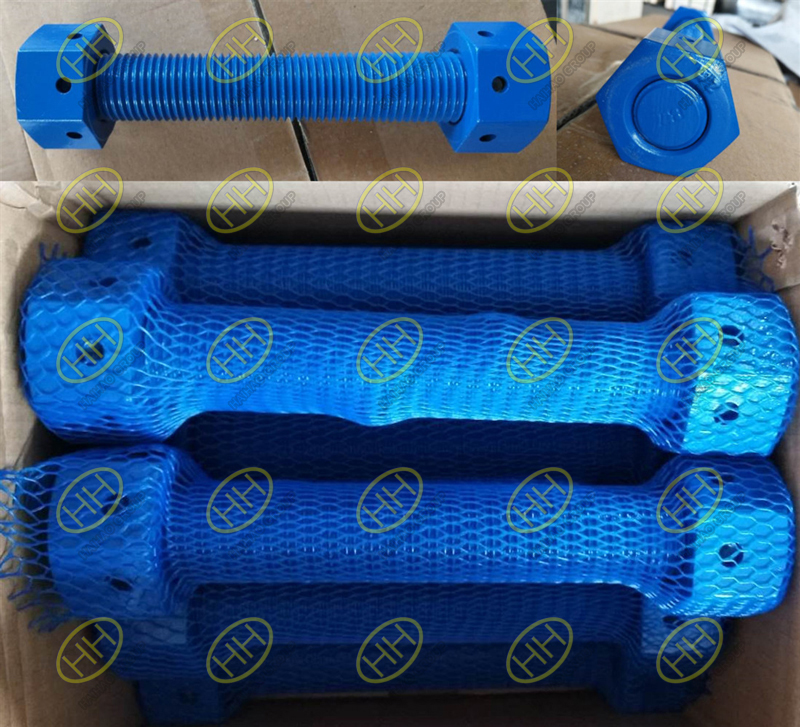ASTM A193 B7 stud bolt with heavy hex nuts
What is ASTM A193 B7 Stud Bolt?
ASTM A193 specification covers alloy steel and stainless steel bolting material of pressure vessels, valves, pipe flanges, and pipe fittings for high temperature or high pressure service, it is chromium molybdenum alloy steel and hold the strength to 1000 degrees F. Usually A193 B7 Stud Bolt are engineered to mate with 2 sets of ASTM A194 Grade 2H Heavy Hex Nuts. We will introduce later. Let’s see the bolts chemical and mechanical first.
Tensile strength and yield strength is strength indicators, elongation and reduction belong to plastic and toughness indicators.

Stud bolts c w 2 nuts A193 B7 A194 2H coated with FLUOROCARBON heavy hex nut with TOMMY BAR HOLE
While tensile strength is the maximum tensile that a finished fastener can withstand before it breaks or begins to break. Tensile Load = Tensile Strength X Thread Nominal Stress Cross-Sectional Area
When the A193 B7 Stud Bolt reaches the yield strength, it has entered the plastic deformation range.
Elongation and reduction measure the deform ability before breaking.
Stud and Bolt
While studs and bolts are very similar. They are both threaded fastener and belong to detachable connection. The differences between them as follow.
Shape
Stud is an external threaded rod with one head. Bolt has thread at both ends without head.
Usage
Mostly studs and nuts are working together to connect two objects with through holes.
One end of bolts is screwed into the metal part with internal threaded hole, the other end is passed through the metal part with through hole, and then the nut is screwed to fasten the two or more parts together.
